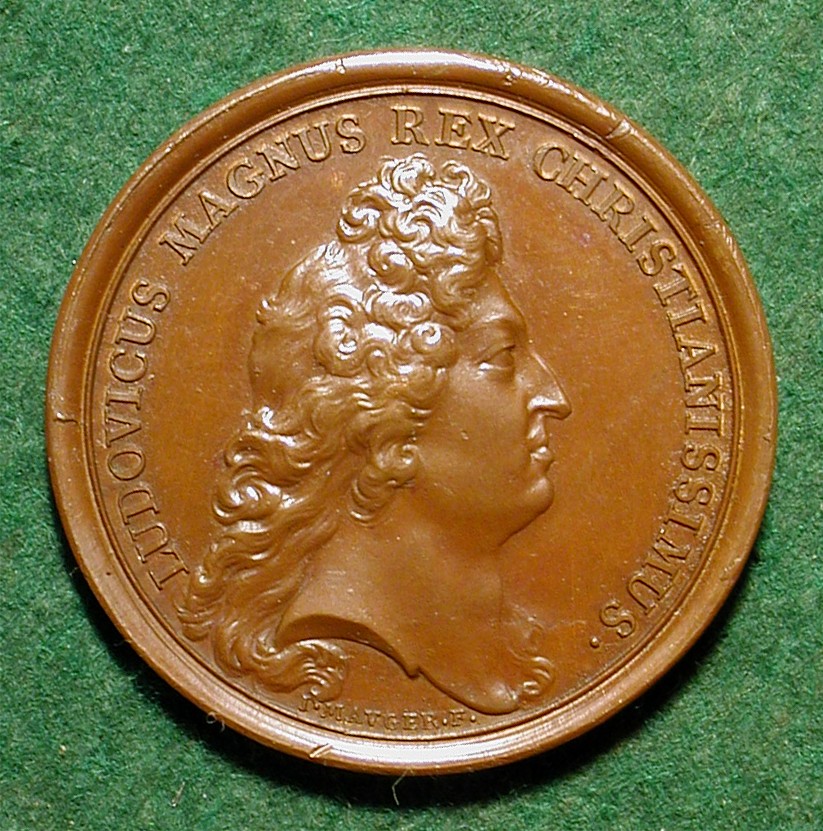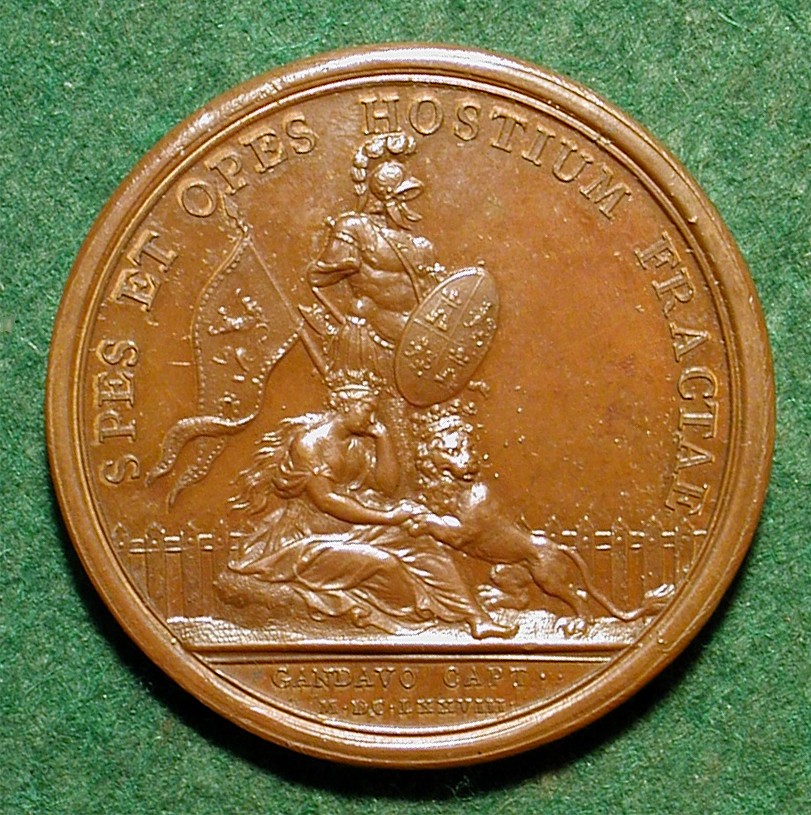

Historical
and Commemorative Medals
Collection of Benjamin Weiss


|
CAPTURE OF THE CITY OF GHENT BY THE TROOPS OF LOUIS XIV MAUGER, Jean: France, 1678, Bronze, 41 mm Ghent, which was for a time a section of the United Provinces of the Netherlands and is now part of Belgium, has an ancient history. Archeological evidence shows human presence in the region of the confluence of Scheldt and Lys going back as far as the Stone Age and the Iron Age. The importance of Ghent waxed and waned over time, but in the 13th century Ghent was the most populous city in Europe, after Paris. The late 16th and the 17th century, however, brought devastation because of the Religious wars. At one time Ghent was a Calvinistic republic, but eventually the Spanish army reinstated Catholicism. These wars ended the role of Ghent as a center of international importance. A notable part of the history of Ghent involved the Franco-Dutch War (1672–1678). This was a war fought by several countries in Europe, among which were, on the one side, the Kingdom of France, the Swedish Empire, and the Kingdom of England, and on the other side, the Dutch Republic, which was later joined by the Holy Roman Emperor, Brandenburg and Spain to form a quadruple alliance. The war ended with the Treaty of Nijmegen in 1678, the same year Ghent was captured by Louis XIV of France, the subject of this medal.
|
|